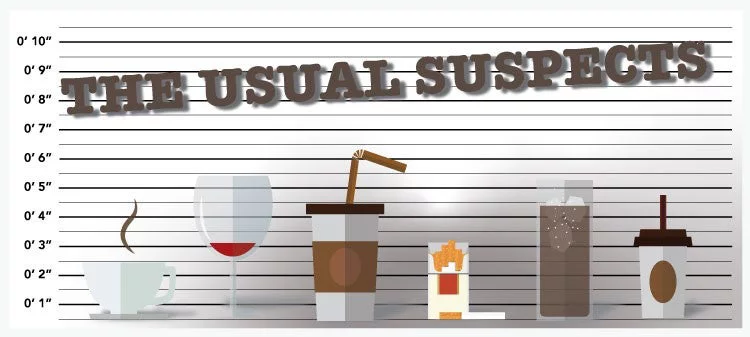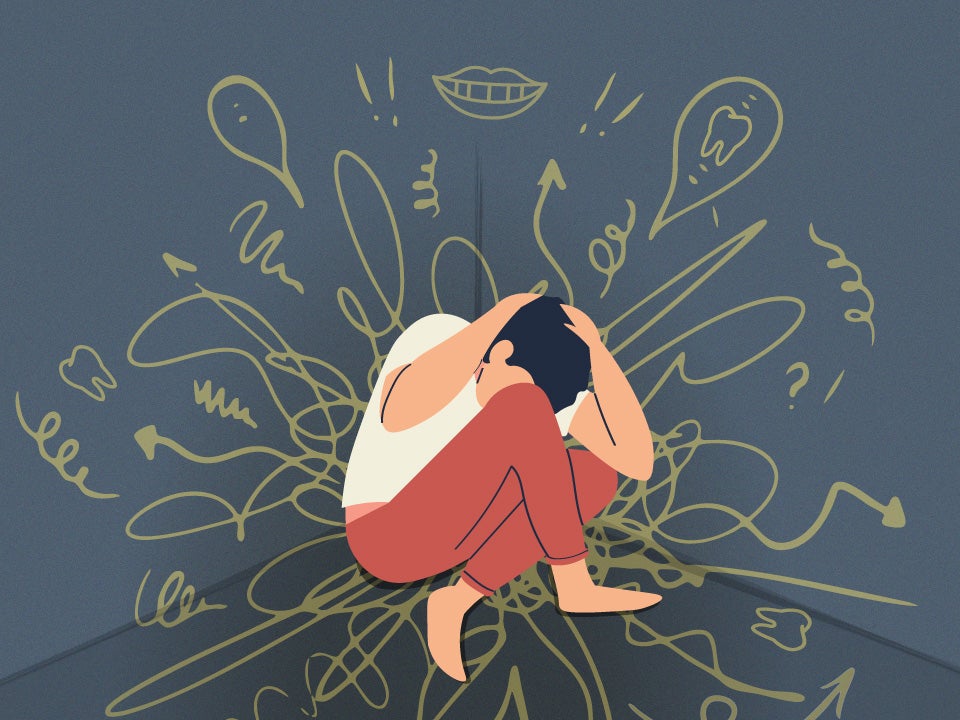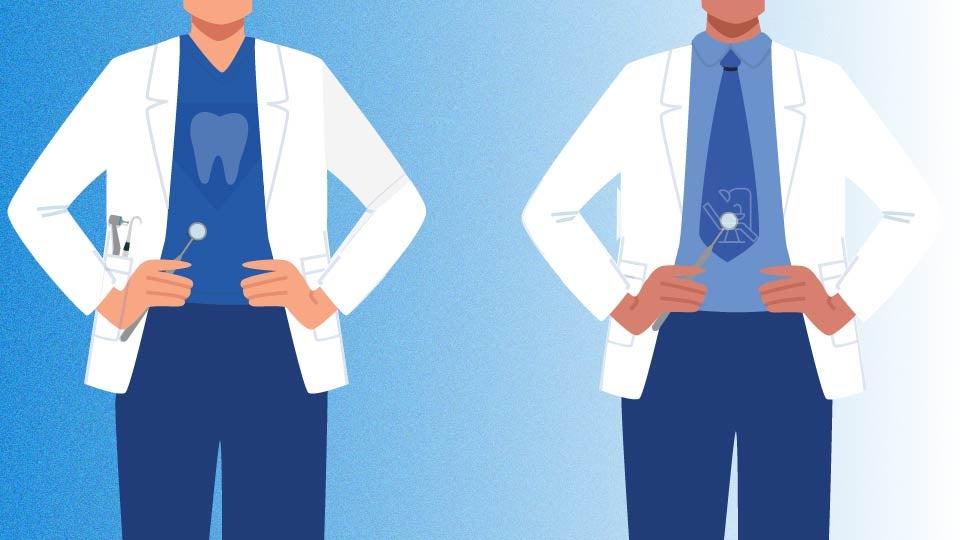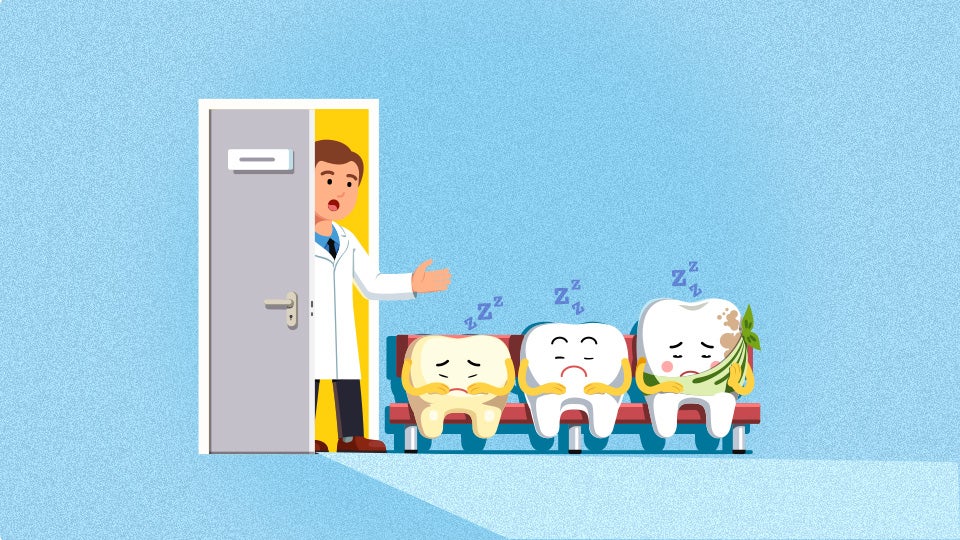But some folks could have an oral issue that will make them hesitant to flash those pearly whites. Yellow teeth or stained teeth are one of those mouth matters that prevent even the happiest people from showing off their smiles.
Stained Teeth Causes
There are a variety of causes when it comes to knowing what stains teeth. Reasons range from certain foods and drinks to medical reasons, and or poor oral care.
- Foods and Drinks: Certain foods and drinks that most people consume can stain your teeth. Pasta sauce, balsamic vinegar, blueberries, blackberries, and raspberries are all foods that stain teeth. Popular drinks such as coffee, tea, red wine, sports drinks, and sodas also cause discoloration.
- Poor Oral Care: Neglecting basic dental hygiene like brushing and flossing stains teeth.
- Tobacco: Besides causing diseases like cancer, tobacco use - specifically cigarettes and chewing tobacco – causes teeth to become discolored.
- Medications: Teeth stains can also be caused by medications. Taking medications for health issues such as chemotherapy, high blood pressure, some antipsychotic medications, and even antihistamines can stain your teeth.
- Braces: Believe it or not, braces, which are intended to straighten your teeth and improve your smile, can play a part in staining your teeth. The design of brackets and wires can trap food particles. Those trapped particles increase plaque buildup. Also, brown stains on teeth from braces can result from the bonding material used to attach orthodontic brackets to your teeth.
- Disease and Trauma: Adult teeth can stain if they’re subjected to physical trauma. Children could be subjected to staining if they suffered trauma, illness, or disease while in the womb or under the age of eight.

Extrinsic Tooth Stains
Intrinsic Tooth Stains
Age-Related Stains
Avoiding age-related tooth stains is out of one’s control since it is caused by two natural processes. But, you can attempt to minimize tooth discoloration through teeth whitening. Opt for the same whitening techniques you’d use for intrinsic staining since the darkening of the dentin plays a larger role in the staining.

How to Remove Stains from Teeth
You don’t have to settle for having stained teeth. There are numerous stain removal methods depending on the type of stain you have. Some methods can be tried at home, while others require a visit to your dentist’s office.
At-Home Teeth Whitening
Whitening Toothpaste and Mouthwash
Whitening Pen
Teeth Whitening Gel
Teeth Whitening Strips

In-Office Teeth Whitening
Professional teeth whitening treatments performed by a dentist offer several advantages over at-home whitening kits.
- In-office treatments produce results faster than at-home treatments
- Teeth can be visibly whiter after a single in-office visit
- A dental professional is supervising the in-office treatment
Laser Teeth Whitening
Laser teeth whitening is a treatment that combines whitening bleach with a heat-generated laser. Your dentist applies bleach to each tooth. The laser supplies the heat that enhances the bleach’s effectiveness. The process is fast and very effective.
Find a Dentist Near Me
Tooth discoloration is sure to keep even the happiest of people from smiling. If that sounds like you, consult your dentist to discuss your questions about stained teeth. Or, check out our tool to find a dentist near you for all your oral care needs, including any remedies for stained teeth. You can read patient reviews, peruse staff bios, and schedule an appointment online with a click of your mouse.
Find your trusted, local dentist today!
Sources
- Crest. (n.d.). Teeth stains: Causes, types, and how to remove teeth stains. Retrieved October 3, 2024, from https://crest.com/en-us/oral-care-tips/teeth-stains/teeth-stains-causes-types-how-remove-teeth-stains
- Colgate. (2024, August 30). Teeth stain removal: Types. Retrieved October 3, 2024, from https://www.colgate.com/en-us/oral-health/teeth-whitening/teeth-stain-removal-types
- Colgate. (2024, August 30). Discolored teeth: Five foods that cause stains. Retrieved October 3, 2024, from https://www.colgate.com/en-us/oral-health/teeth-whitening/discolored-teeth-five-foods-that-cause-stains
- Colgate. (2024, August 30). Is laser teeth whitening an option for you? Retrieved October 3, 2024, from https://www.colgate.com/en-us/oral-health/teeth-whitening/is-laser-teeth-whitening-an-option-for-you
- American Dental Association. (n.d.). Brushing your teeth. Retrieved October 3, 2024, from https://www.mouthhealthy.org/all-topics-a-z/brushing-your-teeth/
- Colgate. (2023, February 13). Facts about teeth whitening. Retrieved October 3, 2024, from https://www.colgate.com/en-us/oral-health/teeth-whitening/facts-about-teeth-whitening
Smile Generation blog articles are reviewed by a licensed dental professional before publishing. However, we present this information for educational purposes only with the intent to promote readers’ understanding of oral health and oral healthcare treatment options and technology. We do not intend for our blog content to substitute for professional dental care and clinical advice, diagnosis, or treatment planning provided by a licensed dental professional. Smile Generation always recommends seeking the advice of a dentist, physician, or other licensed healthcare professional for a dental or medical condition or treatment.








